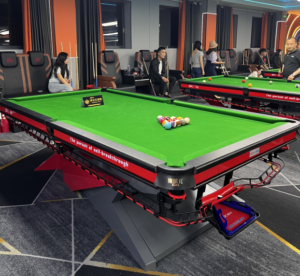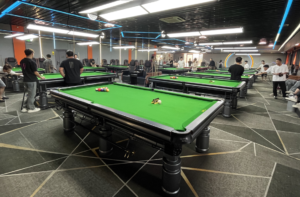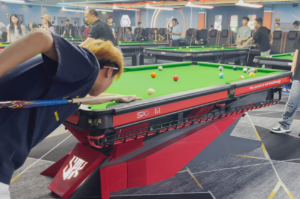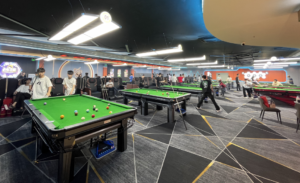Although billiards has a relatively short history in China, it boasts a large player base. However, few truly understand the nuances of the game. As the saying goes, “Growing up without visiting a billiards hall is like missing out on childhood.” Playing billiards not only exercises the body but also cultivates focus.
But how much do you really know about billiards tables? Today, we’ll share 8 essential tips to help you judge table quality—ideal for business owners selecting tables for their venues or players evaluating the standards of a billiards hall.

1. The Table Rail
Billiards table rails typically use fireproof boards, with bulging being the most common issue. New tables usually avoid this, but four main causes exist:
1. Dirty surface before gluing, uneven adhesive application, or missed spots.
2. Inadequate wood drying or humidity changes in different locations.
3. Improper curing time after gluing.
4. Trapped air during bonding, loose cold-pressing, or uneven pressure.

2. The Corner Pockets
Many prefer wide corner pockets for aesthetics, but practice shows wide corners may cause ball ejection. A wider corner reduces the distance from the pocket to the table surface, increasing the chance of balls bouncing back.
Solution: Calculate optimal corner width, precise hole height/location, slate opening, and leather angle. A well-designed wide corner can prevent ejections.
Test tip: Hit balls into the pocket— a standard design should neither eject balls nor let rebounding balls hit the slate edge.

3. The Slate
Slate is a type of stone. Domestic billiards tables use two main slates: marble (for low-end tables) and bluestone (for mid-to-high-end tables). Spike specializes in mid-to-high-end tables, using finely ground bluestone to ensure a perfectly flat and stable rolling surface.
4. The Wood
As a wooden product, wood quality is crucial, determined by:
– The wood species itself.
– Material selection standards.
Post-purchase, wood must undergo drying treatment to prevent deformation. Spike selects premium hardwood, processed through multiple drying stages to eliminate cracking risks.

5. The Steel Cushion
A crisp “thud” when a ball drops into the pocket enhances the player’s satisfaction. This depends on:
1. Hard rail materials to ensure the corner holds firmly, creating clear short-wave vibrations.
2. Optimal corner material (copper sounds better than iron) and width (wider corners produce better sounds).
3. Thin leather corners (excessive thickness dulls sounds) with moderately rounded edges.
4. Tightly wrapped leather (loose wrapping reduces durability).
Tip: Choose tables with high-quality leather corners and test them on-site.
6. The Cushion Elasticity
Test elasticity by throwing a ball hard against the table or striking it with a cue:
– Wooden cushions: 3–4 rebounds on long/short rails.
– Steel cushions: 5–6 rebounds.
This indicates standard cushion performance.
At Spike, professionalism is our standard!
With rigorous testing from multiple institutions and repeated industry awards, Spike stands as a trusted benchmark brand. For billiards hall setups or table orders, contact us today!
